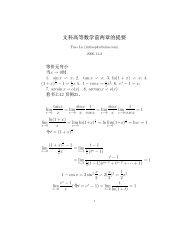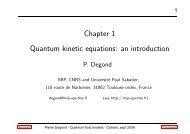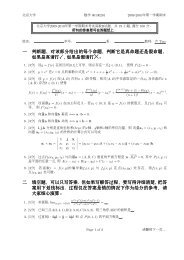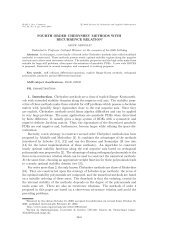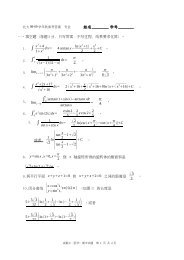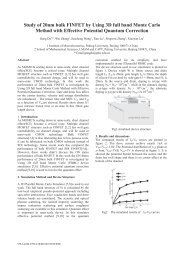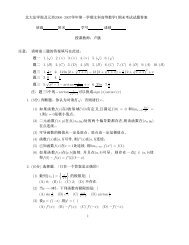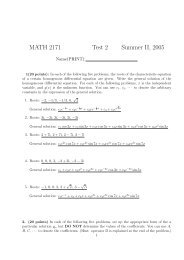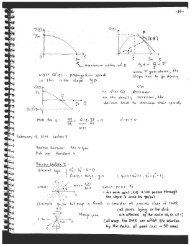Create successful ePaper yourself
Turn your PDF publications into a flip-book with our unique Google optimized e-Paper software.
322 Li<br />
an adaptive h-p-method combines the h-and p-method by refining meshes<br />
locally in some parts of domains and enlarging local approximation function<br />
spaces in other parts.<br />
Successful implementation of the adaptive mesh strategy can enhance<br />
the accuracy of the numerical approximations and also reduce the computational<br />
cost. Over the past two decades, several very efficient adaptive<br />
techniques for the numerical solution of partial differential equations have<br />
been developed. The existing adaptive libraries include ALBERT [14],<br />
deal.II [3,4] and UG [5]. These libraries are based on the h-adaptive<br />
strategy utilizing information extracted from a posteriori error estimators,<br />
which are computable indicators to the local error between the true solution<br />
and the finite element approximations. The indicator often plays a key<br />
role in the adaptive method. (see [8] for some recent results to get the indicator<br />
by superconvergence analysis)<br />
This work will also use the h-refinement method. It is noted that the<br />
libraries mentioned above have only considered mesh adaptation on a single<br />
mesh. However, solutions of practical problems may involve several<br />
components, which may have different natures or singularities. For example,<br />
the 2D Navier–Stokes equations can be expressed in terms of two<br />
variables, i.e., vorticity and streamfunction, and these two variables often<br />
have different regularities. In general, the streamfunction is smoother than<br />
the vorticity, and as a result more grid points are often required for the<br />
vorticity approximation, and fewer are needed for the streamfunction. In<br />
such a case, it may be inefficient to approximate the two solution components<br />
on a single mesh. <strong>Multi</strong>-mesh strategies proved particularly useful<br />
in computational optimal control, where the optimal control and the state<br />
often have very different natures. It was shown in [7] that multi-meshes<br />
can greatly reduce computational work in solving optimal control problems.<br />
Although the idea of using multi-meshes seems to be very natural,<br />
it has been considered very expensive to implement adaptive multi-meshes<br />
in practical computations. A good implementation has to be very efficient<br />
as otherwise the benefits brought by this strategy can easily be consumed<br />
by the extra work introduced. The aim of this research is to develop<br />
efficient adaptive multi-mesh implementation strategies for the solutions<br />
whose components have very different natures or singularities. These strategies<br />
have been implemented in a finite element package AFEpack, and<br />
have bee successfully used in computational optimal control. The key<br />
idea here is to construct multi-meshes in the way that it is convenient to<br />
retrieve the essential information among the elements in different meshes.<br />
The paper is organized as follow. In Sec. 2, we provide the motivations<br />
of the multi-mesh adaptive approach by considering a model elliptic<br />
system. In Sec. 3, the implementation details for the multi-mesh strategy




